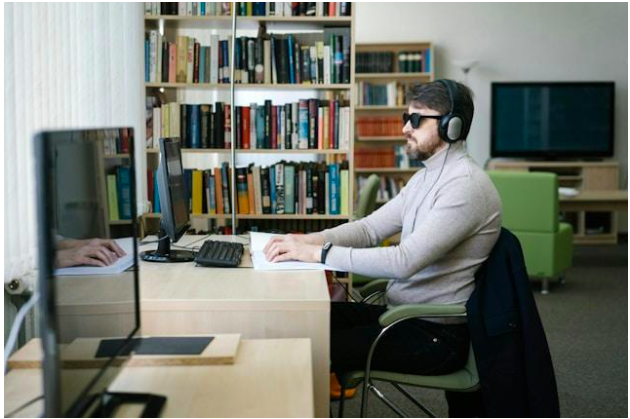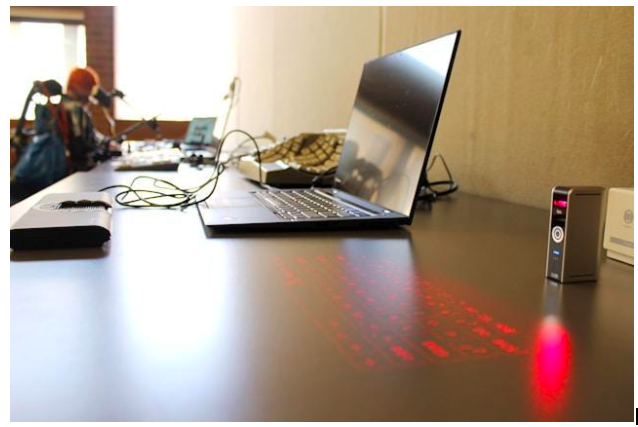These days, new digital learning solutions are released almost every day. This is the new normal. However, in this race to the top, we can lose sight of a critical question: Are these technologies accessible to all users? You might not realize it, but many learning platforms unintentionally create barriers for visually challenged students. Learning with a visual impairment is difficult. Therefore, the biggest challenge today is offering students a truly accessible learning management system (LMS), not just a set of technologies.
We have explored what an accessible LMS should be like to meet the needs of people with visual impairments. Now it’s your turn to find out.

Why LMS Accessibility Matters
As arts educators, we must recognize that the future of arts education is promising. Artificial intelligence and other advanced digital tools are already being used to their full potential, particularly in educational settings. With these tools at our fingertips, we can learn and work much faster and more efficiently. It’s exciting, isn’t it? However, have you asked yourself:
Can every student benefit from learning systems?
When it comes to advanced learning technologies, the needs of people with visual impairments and other special needs should be a priority. These students need more than the standard solutions available to everyone. Keep in mind: One in five people in the UK has a long-term illness, impairment, or disability.
Given this, it’s no surprise that successful learning platforms today need to be user-friendly, adaptive, and accessible to students with visual impairments. Various options should be available, such as screen readers, Braille displays, and screen magnifiers.
So, if you are planning an LMS integration, ensure it is inclusive for visually challenged students.
Understanding Visual Impairment in Learning
Visual impairment can range from low vision to complete blindness:
- While some learners may need larger text,
- Others rely entirely on screen readers and other assistive tools.
There is no one-size-fits-all learning solution. At the same time, however, every LMS should be able to adapt quickly and effectively to meet the wide range of needs of people with visual impairments. Additionally, we should not forget the main purpose of an LMS: to teach, motivate, and encourage creativity in students. So, the idea is to address all these challenges under one LMS umbrella. These can be either comprehensive Learning Management Systems or standalone DIY projects. They inspire students to acquire new skills, transform their creativity into tangible projects, and solve real-world problems.
Nevertheless, any learning solution should be accessible and inclusive.
Accessible LMS: Essential Features
Now, let’s take a look at LMS accessibility in action.
Compatibility with reading devices
Modern LMS interfaces must comply with WCAG 2.1, a set of recommendations for improving web content accessibility. This means your learning system must have the correct heading structure, alternative text for images, and a logical reading order.
Keyboard navigation
Many visually impaired students navigate without a mouse. When designing your own LMS, ensure functions implemented are accessible via keyboard commands with clear focus indicators.
Customizable display options
This is a game-changing feature. The following options should be enabled during the LMS creation phase:
- High contrast modes;
- Text resizing up to 200% without breaking the layout;
- Customizable color schemes.
When uploading step-by-step vector design tutorials to your LMS, ensure your learning materials comply with accessibility principles and guidelines. Training materials should be available in various formats, such as text, audio, video, and images. Also consider providing additional audio explanations of complex terms.
Assistive Technologies: The Next Level of LMS Accessibility
WCAG compliance is only half the battle. Today’s most inclusive LMS platforms go the extra mile by integrating specialized tools that improve the learning experience for visually impaired users.
Modern LMSs offer:
- Smart readers with adjustable language, pitch, and voice settings;
- Compatibility with Braille displays for interpreting complex diagrams;
- AI-powered alternative text that automatically describes images (with human review).
- Voice control for complete navigation through the platform using your voice.
- Mobile optimization for learning on the go (having uninterrupted access to learning is super important for modern users).
Advanced features, such as automatic contrast adjustment and haptic feedback, are also on the way. Just imagine the transformation of the learning experience ahead!

LMS Integration Strategy
When setting LMS goals and objectives, accessibility should be considered from the beginning, not as an afterthought. The most fruitful implementations treat accessibility as a core requirement, not just something to check off a list.
For seamless adoption, integrate accessibility testing across all LMS implementation steps as a standard practice. In addition, rely on feedback from the people for whom you are creating this LMS. Throughout the launch process, invite visually impaired students to test the system. Do so later on as well.
Ongoing accessibility testing is not just a quick fix for current problems or a meaningless procedure to follow. It’s your investment in a future where accessibility is a standard.
Inclusive Design: Everybody Wins
In addition to ethical considerations, investing in accessible LMS integration yields other positive business outcomes. Accessible LMS platforms tend to deliver:
- Higher completion rates across all user groups;
- A reduced number of support requests;
- Better compliance with ever-changing regulatory requirements;
- Improved reputation of the organization;
- Wider reach to potential audiences.
Often, adaptations for visually impaired users provide unexpected benefits to the entire user base. Larger click targets help mobile users, transcriptions help non-native speakers, and clear navigation benefits anyone who needs to quickly complete learning tasks.
Conclusion
As we have realized so far, an accessible LMS is not fiction, but a reality. Moreover, it is a necessity in today’s world if we want our societies to be more inclusive and humane. It should be more than just a set of learning materials, it should be a game-changing platform. Current technologies make it possible to provide an accessible LMS that meets strict requirements. However, it’s not just about following the rules and requirements. By implementing such an LMS, you are challenging outdated teaching methods and narratives and making LMSs for visually challenged students the norm. After all, it should be normal for anyone who wants to develop and learn to have the opportunity to do so.
Of course, creating an accessible LMS is not enough. You must constantly improve and update it to ensure it remains inclusive and meets the needs and feedback of learners. But the result is worth it, isn’t it?